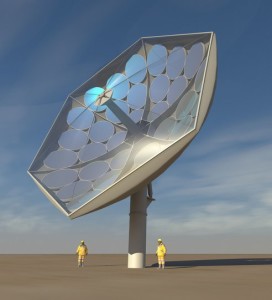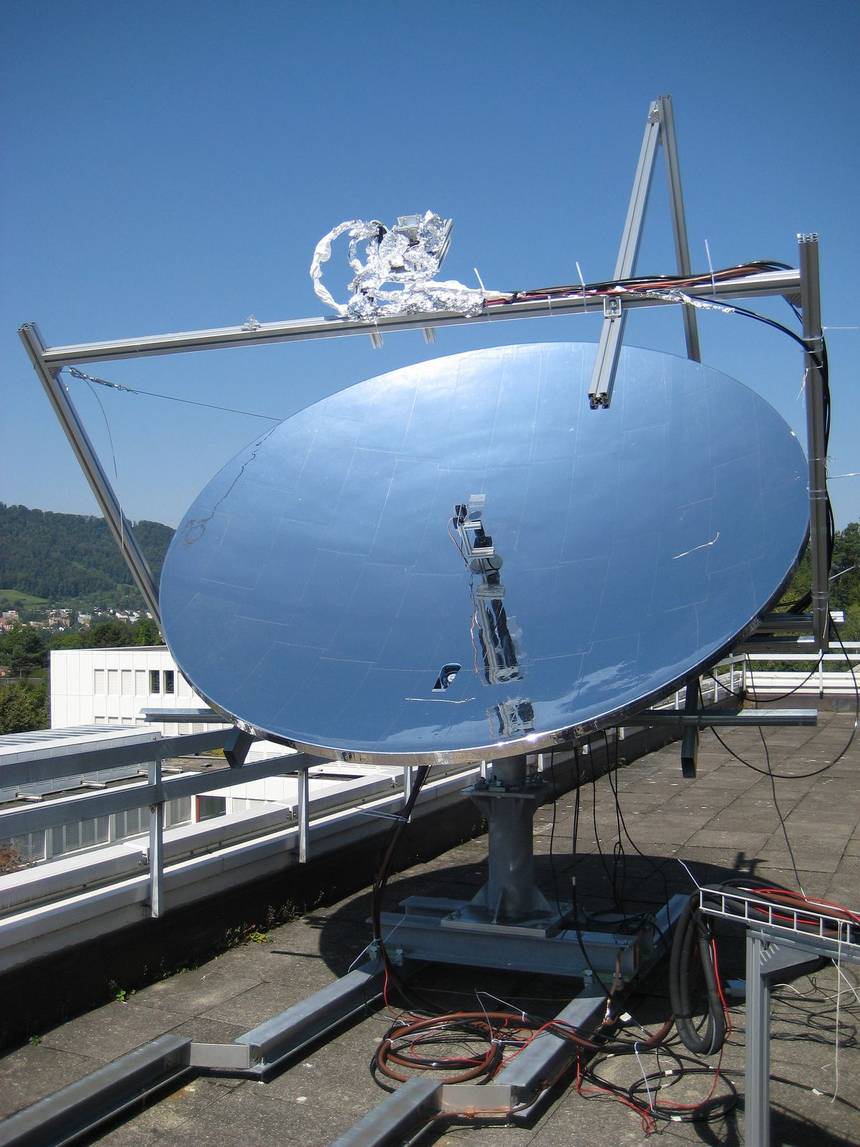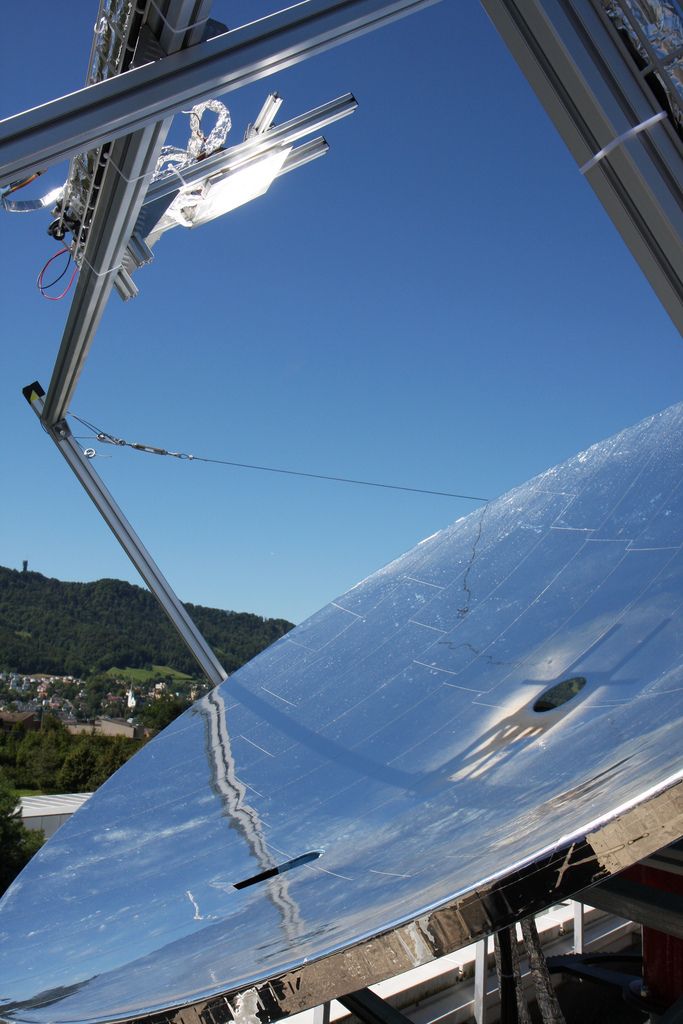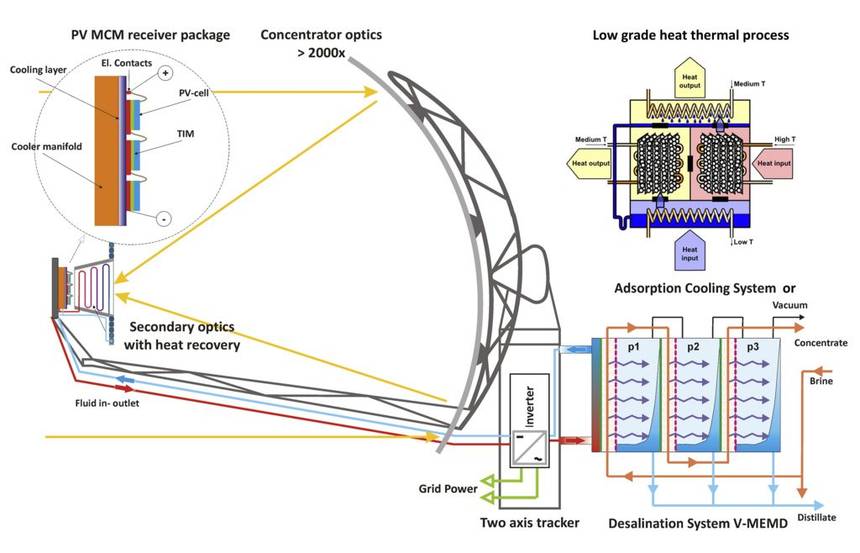Source: treehugger.com
Published: April 23, 2013

© IBM
 Michael Graham Richard Michael_GR
Michael Graham Richard Michael_GR
Cleverly combining solar PV with solar thermal to reach 80% conversion efficiency
Concentrating the sun’s ray onto solar photovoltaic (PV) modules requires walking the fine line between optimizing power output and not literally melting your very expensive super-high-efficiency solar cells.
A team led by IBM Research seems to have found a way to push back the line. They have created a High Concentration PhotoVoltaic Thermal (HCPVT) system that is capable of concentrating the power of 2,000 suns onto hundreds of triple junction photovoltaic chips measuring a single square centimeter each (they even claim to be able to keep temperatures safe up to 5,000x). The trick is that each solar PV cell is cooled using technology developed for supercomputers; microchannels only a few tens of micrometers in width pipe liquid coolant in and extract heat “10 times more effective than with passive air cooling.”

© IBM
Waste not
The beauty is that this heat is not just thrown away. This system gets useful work out of it. So while the PV modules are 30%+ efficient at converting the sun’s light into electricity, another 50% of the sun’s energy is captured as heat and can then be used to do things like thermal water desalination and adsorption cooling. This means that the system is capable of converting around 80% of the collected solar energy into useable energy (though the electricity is of course more useful than the thermal energy).

© IBM
A single collector can produce about 25 kilowatts of electricity. Below is a closeup of some PV cells where the light is being concentrated. Notice the piping to bring the liquid coolant.
In the video below, IBM research scientist Bruno Michel gives an overview of the project:
Video: A Solar Energy Breakthrough: https://youtu.be/J_zzE8xMdZc

© IBM

© IBM
Keeping costs low
It’s great to see that efforts have been made to kind costs low. Some parts are very high-tech, but others are decidedly not:
“The design of the system is elegantly simple,” said Andrea Pedretti , chief technology officer at Airlight Energy. “We replace expensive steel and glass with low cost concrete and simple pressurized metalized foils. The small high-tech components, in particular the microchannel coolers and the molds, can be manufactured in Switzerland with the remaining construction and assembly done in the region of the installation. This leads to a win-win situation where the system is cost competitive and jobs are created in both regions.”

© IBM
They are targeting a cost below $250 per square meter, which would be three-times lower than comparable systems and bring “levelized cost of energy” to less than 10 cents per kilowatt hour (KWh). At this price, it would be a good fit for Southern Europe, Africa, the Arabic peninsula, the southwestern United States, South America, and Australia.

©IBM
Via 300,000 mirrors: World’s largest thermal solar plant (377MW) under construction in the Mojave
